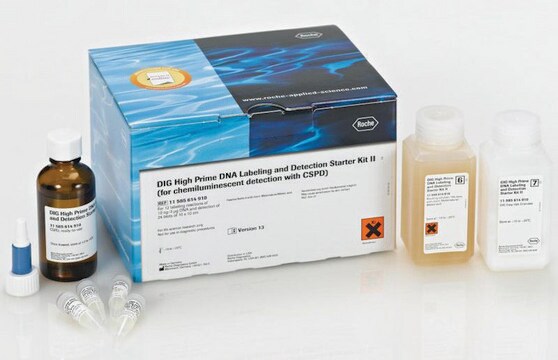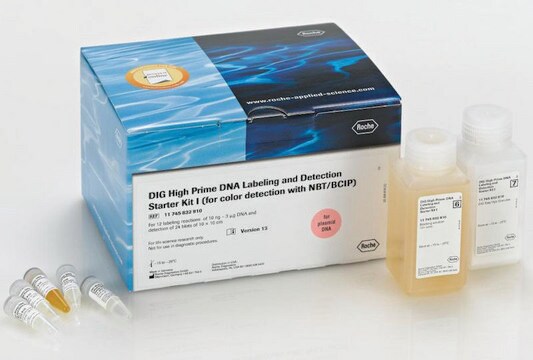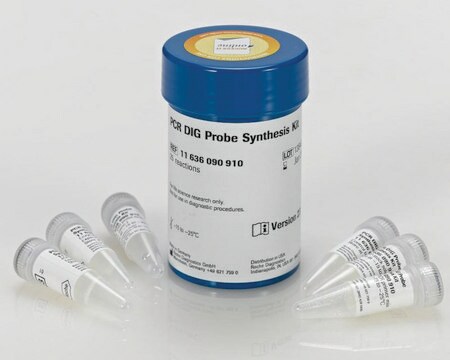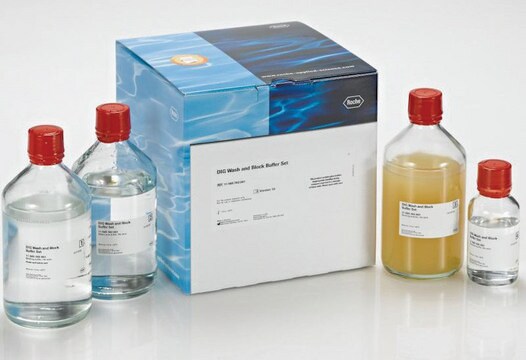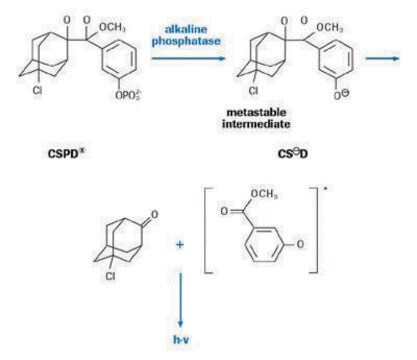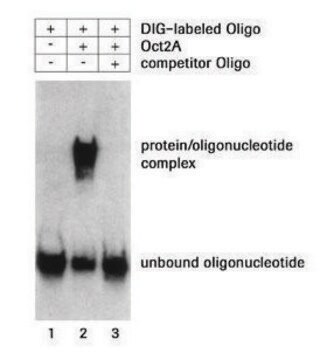11093657910
Roche
DIG DNA Labeling and Detection Kit
Synonym(s):
dna labeling and detection kit, dig
About This Item
Recommended Products
usage
sufficient for 25 labeling reactions
sufficient for 50 blots
Quality Level
manufacturer/tradename
Roche
greener alternative product characteristics
Designing Safer Chemicals
Learn more about the Principles of Green Chemistry.
sustainability
Greener Alternative Product
greener alternative category
, Aligned
storage temp.
−20°C
General description
Contents:
- Unlabeled Control DNA 1, 100 μg/ml
- Unlabeled Control DNA 2, 200 μg/ml
- DNA Dilution Buffer
- DIG-labeled Control DNA, 5.2 μg/ml
- 10x Hexanucleotide Mix
- 10x dNTP Labeling Mixture
- Klenow Enzyme, Labeling grade, 2 U/μl
- Anti-digoxigenin-AP-conjugate, 750 U/ml
- NBT/BCIP Concentrated Stock Solution
- Blocking Reagent
Specificity
Application
- Southern blots
- Northern blots
- Dot blots
- Colony and plaque screening
Packaging
Preparation Note
Other Notes
Kit Components Only
- Unlabeled Control DNA 1 100 µg/ml
- Unlabeled Control DNA 2 200 µg/ml
- DNA Dilution Buffer
- DIG-labeled Control DNA 5.2 µg/ml
- Hexanucleotide Mix 10x concentrated
- dNTP Labeling Mixture 10x concentrated
- Klenow Enzyme, Labeling grade 2 U/µl
- Anti-digoxigenin-AP-conjugate antibody 750 U/ml
- NBT/BCIP Concentrated Stock Solution
- Blocking Reagent
Storage Class Code
13 - Non Combustible Solids
WGK
WGK 3
Flash Point(F)
does not flashNot applicable
Flash Point(C)
does not flashNot applicable
Choose from one of the most recent versions:
Already Own This Product?
Find documentation for the products that you have recently purchased in the Document Library.
Customers Also Viewed
Articles
Digoxigenin (DIG) labeling methods and kits for DNA and RNA DIG probes, random primed DNA labeling, nick translation labeling, 5’ and 3’ oligonucleotide end-labeling.
Our team of scientists has experience in all areas of research including Life Science, Material Science, Chemical Synthesis, Chromatography, Analytical and many others.
Contact Technical Service
